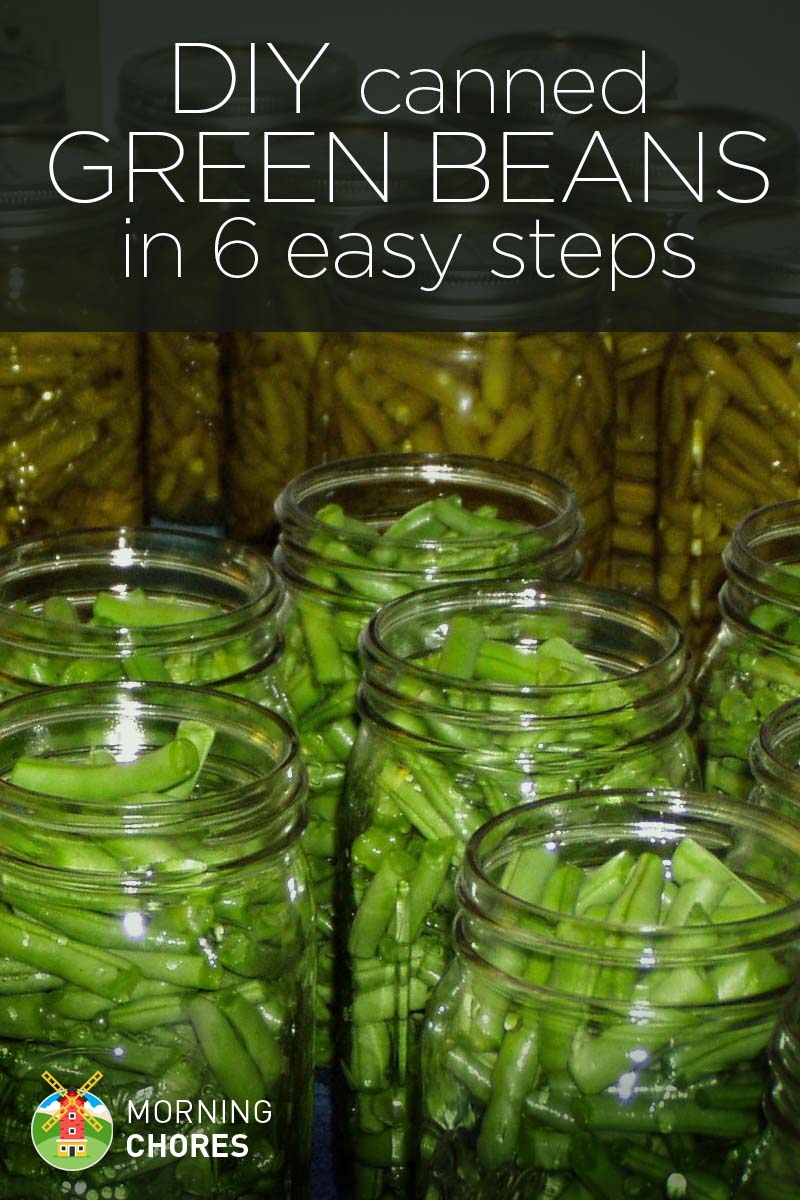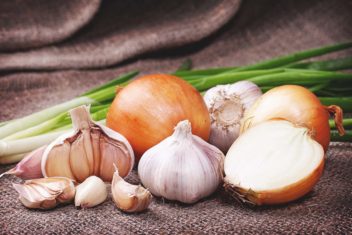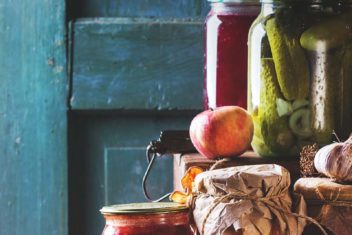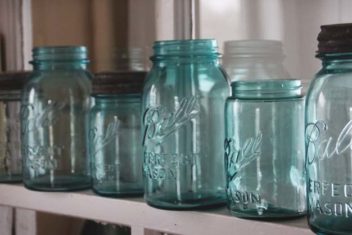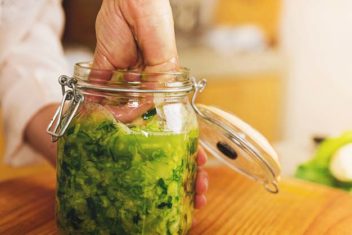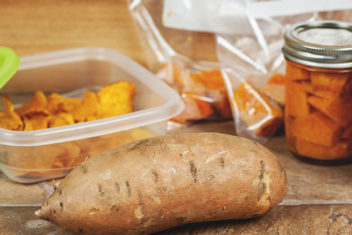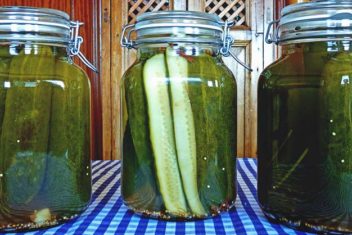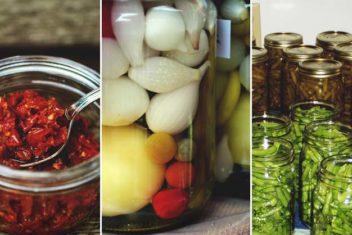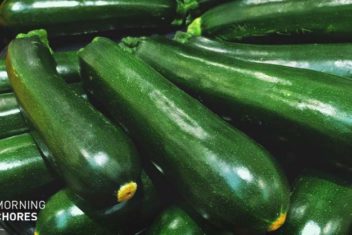Growing a garden is great for fresh vegetables during the summer.
However, a lot of people don’t consider its benefits during the winter months. The excess of your summer garden can be preserved for winter use. One of the easiest vegetables you can preserve is green beans. They are easy to grow and taste great in those winter soups.
Learning everything about canning green beans is an easy task with great rewards.
1. Pick Your Fresh Green Beans
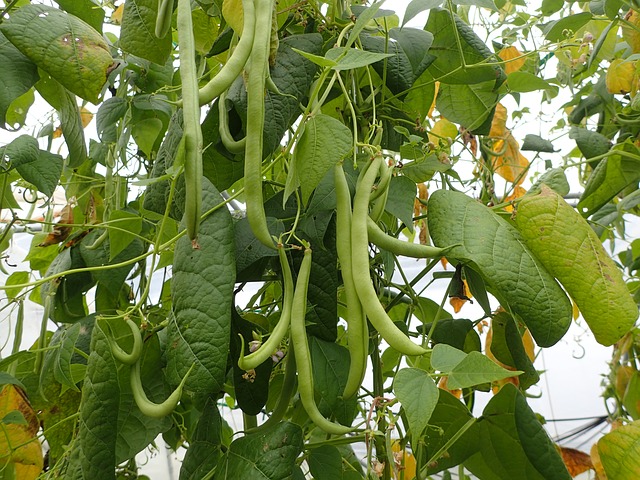
You will know a green bean is ready for picking when the bean is about 2-3-inches long. Some people like to wait until the beans inside the pod have plumped up.
Others like to pick flat beans. It is really a personal preference.
You will pull the beans straight down from the plant until they snap off. You do not want to damage the plant or open the bean in the process.
Just be careful the first few times pulling them from the plant until you get the hang of snapping them off.
2. String and Break the Beans
Unless you plant certain breeds of beans that do not have strings, such as Bush beans, you will have to string them. You can read about all of the different species of beans in our Growing Green Beans post. The purpose of this is to keep from having thin silks in your cooked beans.
They don’t taste bad as much as they are a nuisance when eating. You will string the beans by pulling the fine silks that are on the side of the bean straight down until they break off.
You will need to do this to both sides of the bean.
Immediately after stringing the green beans, the beans will need to be broken. A regular-sized bean can be broken into 3 pieces. This is a good size to fit a good amount into a can so no space is wasted. You break the bean pod by placing it between your thumb and index finger.
Feel for where the bean is inside the pod.
You will place your thumb and index finger between the beans in the pod and gently snap them. Some beans will only break into 2 pieces while others will be larger than normal and break into more than 3 pieces.
Here is a video that demonstrates how to string and break a green bean:
3. Wash, Rewash, and then Wash the Green Beans Again
Once all of your beans have been strung and broken into manageable sized pieces, you will fill the kitchen sink with cold water.
Place all of the beans into the water.
Once the beans have soaked for a minute or two, roll up your sleeves and begin washing the beans. You do this by gently rolling the beans over and over in the cold water. Your water should turn a dirty brown color.
When the water begins to look dirty, drain it and refill with fresh water again.
Once you refill the sink with freshwater, begin rolling over the green beans again until your water changes colors again. You’ll want to do this repeatedly until your water looks clean.
This is how you will know that you have gotten as much dirt as possible off of the beans.
4. Pack Your Jars
Once your beans are clean, you will need to get ready to put them in jars. It is important that you use either Mason jars or old mayonnaise jars.
The glass has to be thick enough to withstand pressure canning. You can prepare your jars by both washing them and using the sanitize setting on your dishwasher, or you can wash them by hand and boil the jars in boiling water.
Either way, it is important to always boil your lids and rings in boiling water before use.
After your jars are washed and ready for use, place 1 teaspoon of canning salt in each 1-quart jar.
You do not have to use quart jars. It depends on what an average serving size is for you or your family at a meal. In smaller families, you might want to use pints. If you have a larger family it would be wise to use quart jars or even ½-gallon Mason jars.
You will need to adjust your canning salt quantities based upon the size jar you decide to use.
After the jars are completely prepped, begin packing them with the washed green beans. You want to pack the green beans tightly to not waste any space.
Pack the jars up to the neck.
Then ladle boiling water over the beans up to the neck as well. After the jars are filled, stick a butter knife down the side of the jar to relieve any air bubbles.
Then place a sanitized, fresh lid into a ring and place it on the jar tightly. You are ready for the canner!
5. Pressure Can Your Green Beans
When all of your jars have lids they are ready for the canner. Green beans need to be pressure canned because they are a low-acid food. Pressure canning helps limit the risk of botulism.
Water bathing does not have the same effect and, therefore, is unsafe for canning green beans. It is important to follow all instructions for your particular pressure canner.
Pressure canning green beans can be dangerous if the canners are not handled properly.
Place all jars in the canner. Then add 3-quarts of water.
Place the lid on the canner and lock it. You will need to add the 10 pounds weight for pressure. Once the stove is turned on, the canner will begin to gain pressure. Once the pressure is up completely on the canner, you will begin to time the green beans. It takes 20 minutes of canning for pints and 25 minutes of canning for quarts.
After the time is up, turn off the stove and wait for the pressure to drop completely. Do not remove the canner lid until the pressure has completely dropped. (This is really important!)
6. Remove Jars from the Canner and Wait
After the jars have been pressure canned, you carefully remove the jars from the canner. You remove them with a towel and a jar grabber in order to keep from burning yourself.
Place a large, thick towel on the counter space you will be using to set the hot jars on. Place the hot jars on the towel. Using the same hand towel you used to remove the hot jars from the canner, be sure to tighten each lid.
Then you wait for 24 hours.
Over the 24 hour waiting period, you should hear “pings” that let you know that your jars are sealing. However, at the end of the 24 hour period, you should run your finger over the top of the jars to make sure that the button in the center of the lid has gone down.
If the button is still raised up in the center, you will need to remove the lid from the ring and reprocess the jar.
Having fresh canned goods on your shelf creates quite an accomplished feeling. You managed to save something from one season to use for another. Canning green beans may take some work but the taste and that feeling of success make it worth the effort.
